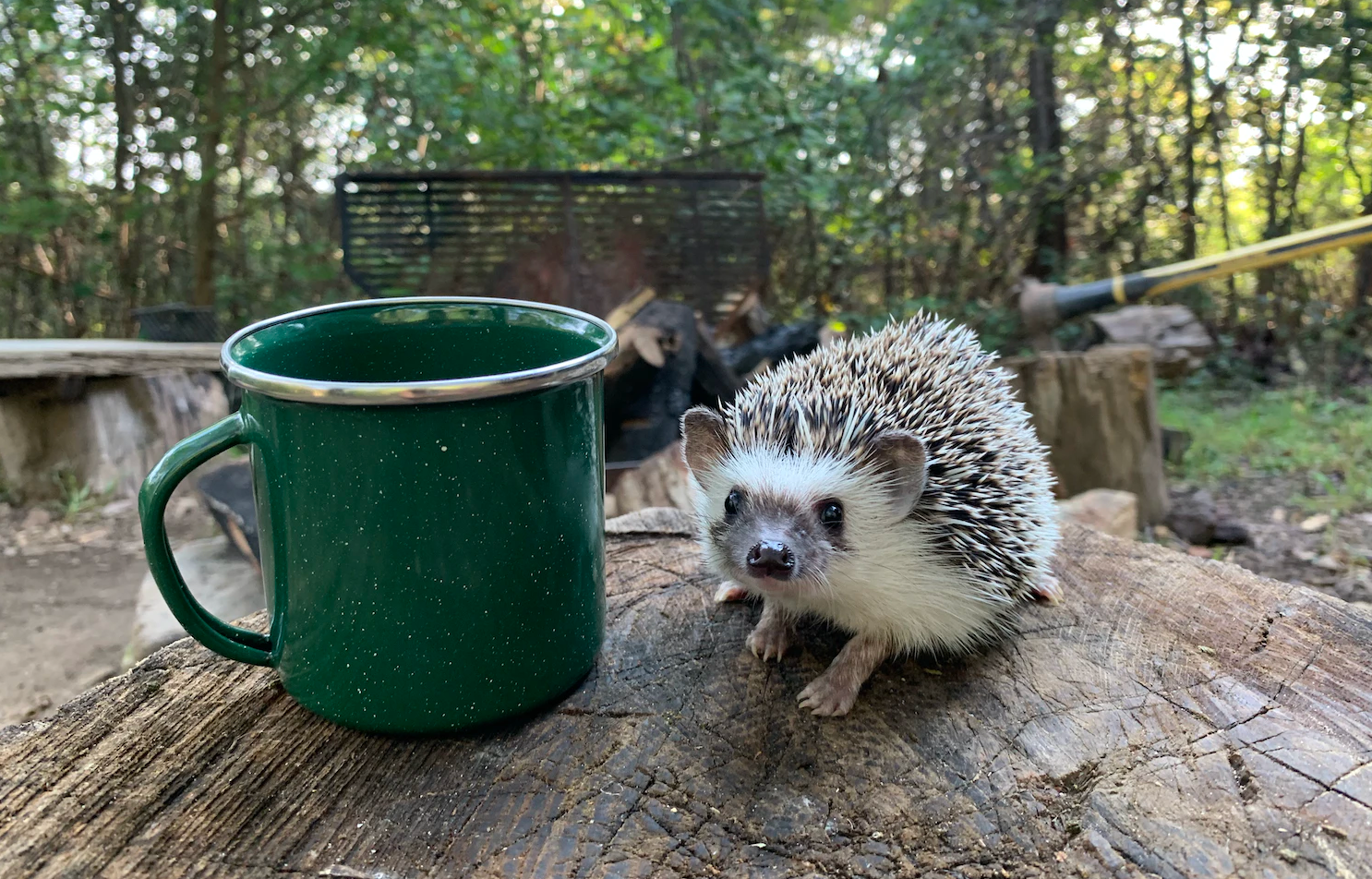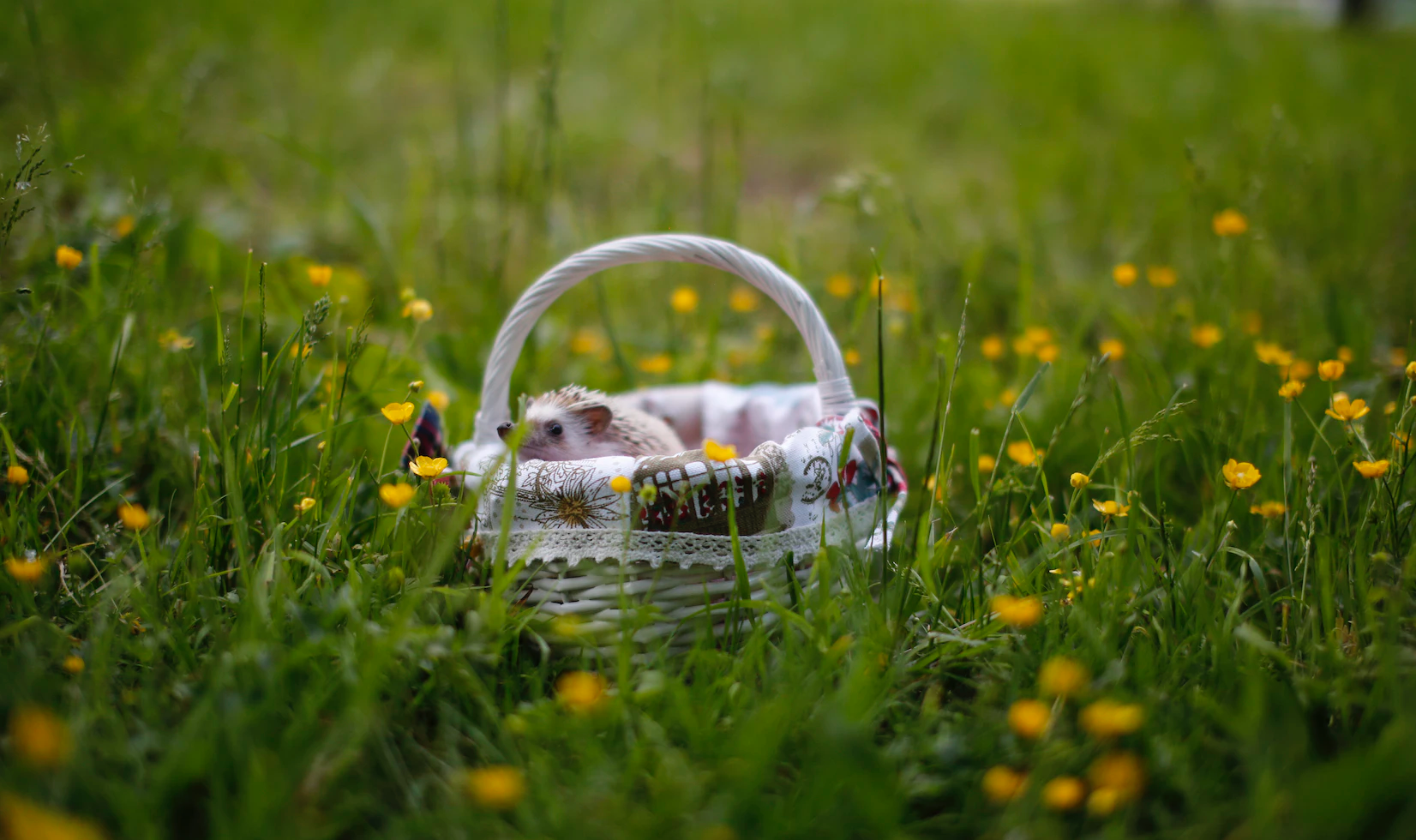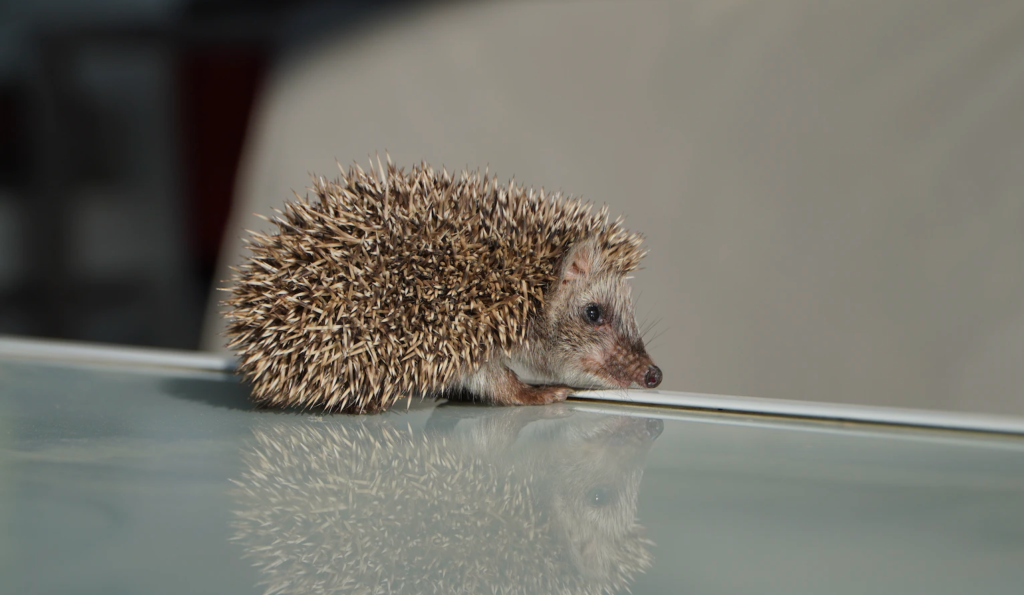What exactly are hedgehogs?
They are little animals with short limbs and low-lying bodies. The thousands of stiff, sharp spines — tougher and sharper than those of a porcupine — that cover the animal’s back and sides, like a pincushion loaded with needles, are its most distinguishing feature.
Pet hedgehogs have between 3,000 and 5,000 spines. They endure about a year before they fall out and are replaced by a new spine. When threatened, an African pygmy hedgehog will firmly curl up. Thanks to little muscles along their spine, pet trade, their hundreds of quills connect in numerous orientations to form a strong defensive wall.
Hedgehog is a solitary animal that only gets together to breed before splitting apart again. If a mother is disturbed while caring for her young, she may abandon the nest or even consume them because the male never stays to watch over them. After mating, the female constructs a nest of grass and leaves. A hedgehog may have three litters.
After 32 days, an African pygmy hedgehog can have a litter of three to five pups other hedgehogs. The hoglets, who are born with their eyes closed, will spend around 5 weeks with their mother before venturing out on their own. Hedgehogs only go outside at night to feed since they are nocturnal. A hedgehog out during the day is likely to get hypothermic and in danger. Lactose is intolerable to hedgehogs! Baby hedgehogs may become sick from drinking milk, own food contrary to popular belief! They also have difficulty digesting bread! A grown hedgehog weighs 700g and measures 25cm in length. They have a lifespan of up to six years.
Hedgehog populations in the UK are expected to have declined from over 30 million in the 1950s to only a few thousand now.
Hedgehog: popular facts
A Year in the Life of a Hedgehog Hedgehogs are allowed to Woodlands all year, and each season has its own set of challenges. Hoglets arrive in droves in the spring and summer, but in the fall, we receive wild small youngsters who are underweight and will not survive the winter. Hoglets arrive in droves in the spring and summer, but in the fall, we receive small youngsters who are underweight and will not survive the winter.
Hedgehogs hibernate, as is generally known. Hedgehogs only hibernate for about ten days at a time, and they do so from October/November until March/April. You must continue to feed your pets as normal during the winter! Hedgehog weight needs for hibernation are around 750g.

Hedgehog as a solitary animal: The nocturnal, active, and lonely hedgehog
Although hedgehogs may reproduce at any time of year, May to June is their prime breeding season. A female can have up to two litters of up to five hoglets each.
Autumn male hedgehogs spend the autumn months building body bulk before hibernating. Any hoglets born around this time will struggle to survive since they will not be able to gain enough body bulk to survive the winter.
Hedgehog Diet and Housing Requirements
In the wild, hedgehogs eat a wide variety of insects, plants, and roots. It can be difficult to replicate that diet in captivity. Dr Keller believes that one of the various commercially available formulations of particularly prepared insectivore or hedgehog diets would be the best diet for hedgehogs. As a supplement, you can include mealworms, crickets, and fruits and vegetables in this diet.
Male hedgehogs may appear clumsy, but they are actually incredibly agile creatures! In the wild, they are superb climbers and swimmers, and they regularly run many kilometres at night. Hedgehogs maintained as pets with unique personalities require an enclosure large enough to accommodate an exercise wheel as well as their typical foraging activities.

The cage must provide a sleeping area for the hedgehog as well as smooth sides. An enclosure should be at least two by three feet in size. Large Tupperware storage containers are an excellent alternative for an enclosure. An external heat source (such as a heat lamp or an under-tank heater) is also required so that the enclosure’s efficacy may be checked. Hedgehogs are tropical animals that thrive in temperatures ranging from 75 to 85 degrees Fahrenheit. Torpor can occur in hedgehogs as a result of colder or warmer conditions for one hedgehog. Hedgehog Habits as a solitary animal
The hedgehog is active at night not only at young age. They are most active at night and sleep throughout the day than other animals. “They will be waking up for their ‘day,’ which can be a nice opportunity to connect with them before you go to bed,” Dr Keller says. Keep in mind that you might not want their cage near your bedroom due to their overnight activities, which include wheel running. Exercise wheels make a lot of noise! According to Dr Keller, exercise wheels with a wire bottom should never be used since they might cause limb fractures. According to Dr Keller, exercise options are critical since many caged hedgehogs are overweight. “Every week, let your hedgehog a few hours to explore or swim outside the enclosure under supervision.

